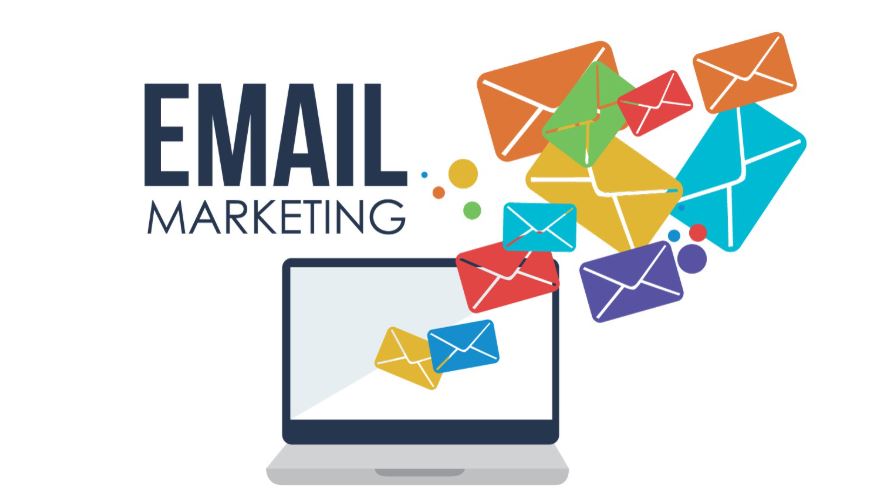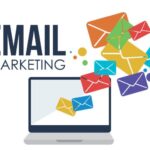If you run a startup, you already know how tough it can be to get attention online. You have a small team, a tight budget, and a long list of things to do.
In this complete article, we’ll explore simple, proven, budget-friendly email marketing strategies for startups.
Why Email Marketing Matters for Startups
Many founders underestimate email, thinking it’s old-school. But statistics tell a different story. Email marketing offers an average ROI of $36 for every $1 spent. That’s huge — especially for a startup with limited funds.
Here’s why it works so well:
1. You Own Your Audience
Unlike social media, where algorithms decide who sees your posts, email gives you full control. Every email you send lands directly in your subscribers’ inboxes.
2. It’s Affordable
Most email marketing tools offer free plans for beginners. You can grow your list and send campaigns without spending much.
3. It Builds Trust
Startups need to build credibility fast. Email allows you to consistently share value, stories, updates, and tips that help people trust your brand.
4. It Drives Sales
From product launches to flash deals, email generates more conversions than social media. People on your list are already interested.
5. It’s Easy to Automate
You can set up automated emails that run in the background while you focus on growing your startup.
How to Start Email Marketing for Your Startup
You don’t need advanced skills or complicated tools to begin. Just follow these simple steps.
1. Define Your Email Marketing Goals
Before sending your first email, decide what you want to achieve. This helps you create focused campaigns.
Common startup goals include:
- Getting your first customers
- Promoting a new product
- Driving traffic to your website
- Building authority in your niche
- Nurturing cold leads
- Staying connected with users after signup
Your goals will guide your content, tone, and timing.
2. Choose an Affordable Email Marketing Tool
You don’t need expensive platforms. Many affordable — even free — tools are perfect for startups.
Here are the best options:
Mailchimp (Free & Beginner-Friendly)
Ideal for startups that want an easy drag-and-drop editor and free automation features.
MailerLite (Affordable & Clean Interface)
Offers a generous free plan, simple templates, and low-cost upgrades.
Sendinblue/Brevo (Pay-as-You-Go)
Great for sending many emails without paying for a large contact list.
ConvertKit (Best for Creators & Startups Building Audiences)
Great for content-driven brands or founders who want advanced automation.
Zoho Campaigns (Budget Tool for Small Teams)
Part of the Zoho suite, perfect for startups already using Zoho CRM or other Zoho tools.
Start with a tool that fits your budget and grows with your business.
3. Create a Lead Magnet People Want
People won’t give you their email unless you offer value. A lead magnet is something free you give in exchange for their email.
Examples for startups:
- Free eBooks
- Checklists
- Webinar invitations
- Early access to your app
- A discount code
- Templates
- Free tools or calculators
- A free trial
Keep it simple and relevant to your target audience.
4. Build Landing Pages and Signup Forms
Your signup form needs to be visible, simple, and compelling. These are the best places to add them:
- Homepage
- Blog posts
- Pop-ups
- Footer
- About page
- Product pages
Also create a dedicated landing page to collect emails for your lead magnet. Your message must be clear, short, and benefit-focused.
5. Start With a Welcome Email Series
This is the most important part of your email marketing because it sets the tone for your relationship with subscribers.
A simple 3-email welcome sequence works well:
Email 1: Welcome + Deliver the Lead Magnet
Thank them, introduce your brand, and give them the free item.
Email 2: Share Your Story
Tell them who you are, your mission, and how you can help them.
Email 3: Offer Value
Share tips, tools, or resources — and invite them to follow you on social media or check out your site.
This sequence builds trust quickly.
Simple Email Marketing Strategies That Actually Work
Once your list starts growing, here are the best strategies for startups to get real results — even on a tight budget.
1. Send Weekly or Bi-Weekly Newsletters
Consistency is key. Your subscribers want to hear from you regularly. A weekly or bi-weekly newsletter keeps your brand on their mind.
You can share:
- Tips
- Stories
- Updates
- Industry news
- Behind-the-scenes
- Product education
Keep it short and helpful.
2. Use Personalisation
Subscribers respond more when emails feel tailored to them.
Personalise by:
- Using their name
- Sending relevant content
- Recommending products based on interest
- Automated behaviour-based emails
Even simple personalisation boosts open and click rates.
3. Segment Your Audience
Don’t send every email to everyone. Group your subscribers based on:
- Interests
- Location
- Behavior
- Purchase history
- Signup source
Segmentation increases engagement and reduces unsubscribe rates.
4. Use Storytelling to Build Emotion
People remember stories more than sales pitches. Share:
- Your startup journey
- Failures and lessons
- Customer success stories
- Why you built your product
Stories humanise your brand.
5. Add a Clear Call to Action (CTA) in Every Email
Tell your readers exactly what to do next.
Good CTAs include:
- “Try it free today.”
- “Download your guide.”
- “Get your discount.”
- “Read the full blog post.”
Each email should have ONE main purpose.
6. Automate Your Most Important Emails
Automation saves time and keeps your marketing running even when you’re busy.
Useful automated email types:
- Welcome sequence
- Abandoned cart emails
- Product onboarding emails
- Re-engagement emails
- Purchase follow-ups
- Review requests
Set them once and let them run.
7. Write Emails That Sound Human
Your audience doesn’t want robotic or formal messages. Write like you’re talking to a friend.
Tips:
- Use simple language.
- Keep sentences short.
- Speak directly (“you”, “your”).
- Use a friendly tone.
- Add personality.
People connect with real human voices.
8. A/B Test Your Emails
Testing helps you discover what your audience likes. Test:
- Subject lines
- CTA buttons
- Email length
- Images vs. plain text
- Send times
Even small changes can boost conversions.
9. Use Email to Drive Traffic to Your Content
You can use email newsletters to promote:
- Blog posts
- Videos
- Social media content
- Product demos
- Webinars
More traffic means more sales opportunities. 10. Track Your Metrics and Improve Over Time
Focus on key metrics:
- Open rate
- Click-through rate
- Conversion rate
- Unsubscribe rate
- Bounce rate
These numbers tell you what’s working — and what needs fixing.
Affordable Email Marketing Tools for Startups
Startups don’t need premium tools to run successful email campaigns. These budget-friendly platforms offer powerful features without costing much.
1. Mailchimp
- Free for up to 500 contacts
- Easy drag-and-drop email builder
- Pre-made templates
- Great for beginners
2. MailerLite
- Clean, modern interface
- Free plan for up to 1,000 subscribers
- Advanced automation
- Easy landing page builder
3. Brevo (formerly Sendinblue)
- Pay-as-you-go pricing
- Unlimited contacts
- Perfect for startups sending many emails
- SMS marketing included
4. ConvertKit
- Free plan for up to 1,000 subscribers
- Perfect for content creators
- Clean, simple automation maps
- High deliverability
5. Zoho Campaigns
- Fits well with other affordable Zoho tools
- Best for startups using Zoho CRM
- Simple interface
- Very low-cost plans
6. TinyEmail
- AI-assisted email creation
- Affordable and beginner-friendly
- Great templates
7. Moosend
- Low-cost automation
- Simple for new marketers
- Strong analytics
Choose the tool that fits your needs and budget, and grow from there.
How to Write Emails People Actually Want to Read
Good email writing is a skill, but you can master it quickly with these steps.
1. Start With a Strong Subject Line
Your subject line decides whether someone opens your email. Keep it:
- Short
- Clear
- Benefit-focused
- Curiosity-driven
Examples:
- “Here’s your free guide 🎁.”
- “Quick tip to boost your results today”
2. Grab Attention With Your First Line
Your preview text must hook the reader.
Examples:
- “I learnt this the hard way — but you don’t have to.”
- “Here’s a simple trick you can try today.”
3. Keep the Body Simple and Engaging
People don’t like long, boring paragraphs.
Use:
- Short paragraphs
- Bullets
- Stories
- Examples
Make it easy to read.
4. Focus on Value Before Selling
Give value first, sell second. If every email is a pitch, people will ignore you.
5. End With a Strong CTA
Tell them exactly what you want them to do next.
Mistakes Startups Should Avoid in Email Marketing
To succeed, avoid these common errors:
1. Sending Too Many Sales Emails
People hate feeling pressured. Mix value with offers.
2. Not Testing Before Sending
A quick preview saves you from typos or broken links.
3. Ignoring Mobile Users
Over 60% of emails are opened on phones.
4. Buying Email Lists
This harms your domain reputation and email deliverability.
5. Not Segmenting Your List
Not everyone wants the same content.
Email Ideas Startups Can Use Right Away
Here are email types you can create immediately:
- Welcome series
- Product updates
- How-to tips
- Case studies
- New blog announcements
- Limited-time promotions
- Survey and feedback emails
- Onboarding sequences
- Milestone celebration emails
These email types keep your audience engaged and informed.
Conclusion
Email marketing is one of the most affordable, effective, and scalable ways for startups to grow. You don’t need a big budget, a large team, or advanced skills. You just need the right tools, simple strategies, and a consistent approach.
Over time, you’ll build trust, convert leads, and grow your startup faster than you expected — all through the power of email.










